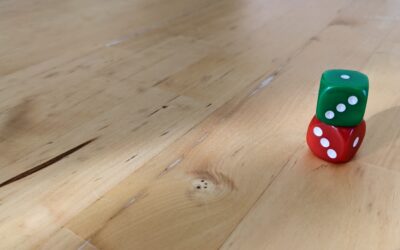In a recent hearing decision, the Australian Patent Office has provided insight into the application of the patentable subject matter test, post the High Court’s split decision in Aristocrat Technologies Australia Pty Ltd v Commissioner of Patents [2022] HCA 29. The Commissioner’s decision in Apple Inc. [2022] APO 83 should provide useful, practical guidance when preparing arguments for response to a patentable subject matter (i.e., manner of manufacture) objection.
Background
Patent application AU 2019268070, owned by Apple Inc. and having an earliest priority date of 9 September 2013, described an electronic device including a biometric sensor used as an input to reveal redacted content of information displayed on a screen of the electronic device. The specification highlighted the problem being addressed by the alleged invention:
Many electronic devices have graphical user interfaces that contain private information (e.g., information that a user of the device may not want to be viewed by others). Redacting private information prevents other people from viewing the private information; however, redacting private information also prevents the user of the device from viewing the private information. Some methods require a user to perform a complicated sequence of steps (e.g., navigating to a settings menu and/or entering a pass code or password) to reveal redacted information (e.g., by unlocking the device or changing redaction settings). This makes it difficult and time consuming for the user to quickly review an unredacted version of the information.
Throughout examination, the Examiner maintained that the claims were not for a manner of manufacture (i.e., unpatentable subject matter). Apple requested a hearing.
Claim 1
As discussed in our recent article about Aristocrat Technologies Australia Pty Ltd v Commissioner of Patents, the High Court made it clear that the substance of the invention is identified in light of the common general knowledge. In this instance, the Delegate of the Commissioner of Patents (herein the Delegate) noted that mobile phones with a fingerprint sensor to authenticate a user’s credentials and unlock the phone had been introduced in the market as far back as 2007 and that the redaction of documents in an electronic form was well-known at the priority date. However, the Delegate did acknowledge that the use of fingerprint scanners in an electronic device as a means of authentication for the purpose of viewing redacted content was not common general knowledge.
The Delegate concluded that the substance of the invention related to the redaction of electronic documents viewed on an electronic device with a display and a biometric sensor, wherein first and second information items of the document that are being viewed on the display are redacted in a manner so that only identifying information of both the information items is displayed while the content information of both the information items are hidden from view and while viewing the redacted document the user can unhide and view the content information of both information items simply by authenticating their credentials using the biometric sensor of the device.
The substance of the invention is well depicted in Figure 20D from the specification, showing a first portion of an information item being redacted whilst a second portion of the information item being visible, compared to Figure 20H of the specification which shows all information being presented in an unredacted form in response to user authentication via use of the biometric sensor.

The Delegate proceeded to apply various considerations for determining whether a computer implemented invention is directed toward patentable subject matter.
Does the invention solve a technical problem?
The Delegate acknowledged that the problem being addressed related to the cumbersome and time-consuming processes for authenticating a user’s credentials for the purpose of viewing redacted content. Apple asserted that a reduction of steps for authenticating user credentials helped to conserve power and increase the time between battery charges. Apple also submitted that if the information item is redacted in its entirety, a user will not know whether the redacted information is actually important or not and the only way to determine this is to go through the unredacting process to find out.
However, the Delegate concluded that the claim was not limited to battery operated devices and that any potential savings in energy do not necessarily relate to any improved computer function. Furthermore, the Examiner did not see any technical problem that may arise from redaction of information in its entirety, stating that the problem related to access rules that are in their nature a scheme which is clearly non-technical.
Does the invention provide a technical solution to the problem?
Apple asserted that the problems were addressed by providing an improved human computer interface by providing a streamlined authentication process for revealing redacted information for multiple information items without having to perform additional, separate, inputs.
However, whilst the Delegate acknowledged that the process was more streamlined, the Delegate concluded that the method of authenticating a user’s credentials using a biometric sensor remained unchanged and did not result in an improved computer or an improved computer interface.
Does the claimed method require only generic computer implementation?
The Delegate noted that the alleged invention is implemented in an electronic device which has a display and a biometric sensor as per prior art electronic devices with suitable programming. The specification did not provide any code for such programming, leaving it entirely up to the skilled person. As such, the Delegate concluded that the alleged invention of claim 1 only required generic computer implementation in any electronic device that has a display and biometric sensor.
Is the computer merely the intermediary, configured to carry out the method?
The Delegate noted that the computer is being used to merely authenticate a user’s credentials using a standard biometric sensor and to manipulate information that is presented on a standard display. Manipulation and presentation of data on a display based on suitable programming were considered standard functions of a computer and the displaying of only identifying information and not content information were considered no more than the performance of such standard functions. The Delegate concluded that the method is implemented merely through suitable programming of the computer which reinforced the conclusion that the computer is only the intermediary to carry out the method.
On balance, the Delegate ultimately concluded that the alleged invention defined by claim 1 was not for a manner of manufacture. Whilst the Delegate acknowledged that the alleged invention defined by claim 1 provided a practical and useful result by reducing the effort and time required to authenticate a user’s credentials to reveal redacted content, this was achieved using authentication technology that was part of the common general knowledge, thus leading to a conclusion that the substance of the invention was directed toward an administrative/business innovation rather than a technical innovation.
Claims 11 and 12
Dependent claims 11 and 12 further defined arrangements in which the biometric input controlled the way redacted information was revealed and the locked condition of the device. Claims 11 and 12 were considered to both define that the unredacted version of the first and second information items is only displayed if the biometric sensor continued to detect the biometric input and once the biometric input ceases, the display reverts to the redacted version of the first and second information items.
Apple asserted that that this working interrelationship between biometric authentication and the display of unredacted information as defined by dependent claims 11 and 12 cannot be described as a mere presentation of information. The Delegate agreed with Apple’s assertions in relation to dependent claims 11 and 12. In particular, the Delegate noted at [72]:
According to these claims, the information items in their unredacted form are displayed only as long as biometric input of an authorised user is detected through the biometric sensor. It requires the user to continue to provide their biometric input for as long as they wish to view the unredacted information items. As soon as an authorised biometric input ceases to be detected, the information items revert to their redacted form. There is therefore a definite link between the sensing of the biometric input and duration of the display of the information items in their unredacted form. This is the key distinction between the invention of these claims and that of claim 1 where the biometric input is no more than a substitute for other forms of user authentication to initiate the display of the information items in their unredacted form. The biometric input in claim 1 has no further role to play. On the other hand, the invention of claims 11 and 12 provide a technical means for the user to choose how long they wish to view the information items in their unredacted form. It also improves the security of the redacted content by only displaying it while biometric input of an authorised user is being continually sensed. These are technical effects that elevate the invention to something more than a business innovation.
On balance of these considerations, the Delegate was satisfied that claims 11 and 12 were directed toward patentable subject matter.
Take Away
Whilst the High Court was split in Aristocrat Technologies Australia Pty Ltd v Commissioner of Patents regarding whether an improved computer function was necessary for a claim directed toward a computer implemented invention to be patentable subject matter, the Australian Patent Office continues to seek such a requirement from applicants. Carefully crafted arguments highlighting technical advantages of a computer implemented invention should be presented in response to provide the best prospects of achieving acceptance.









